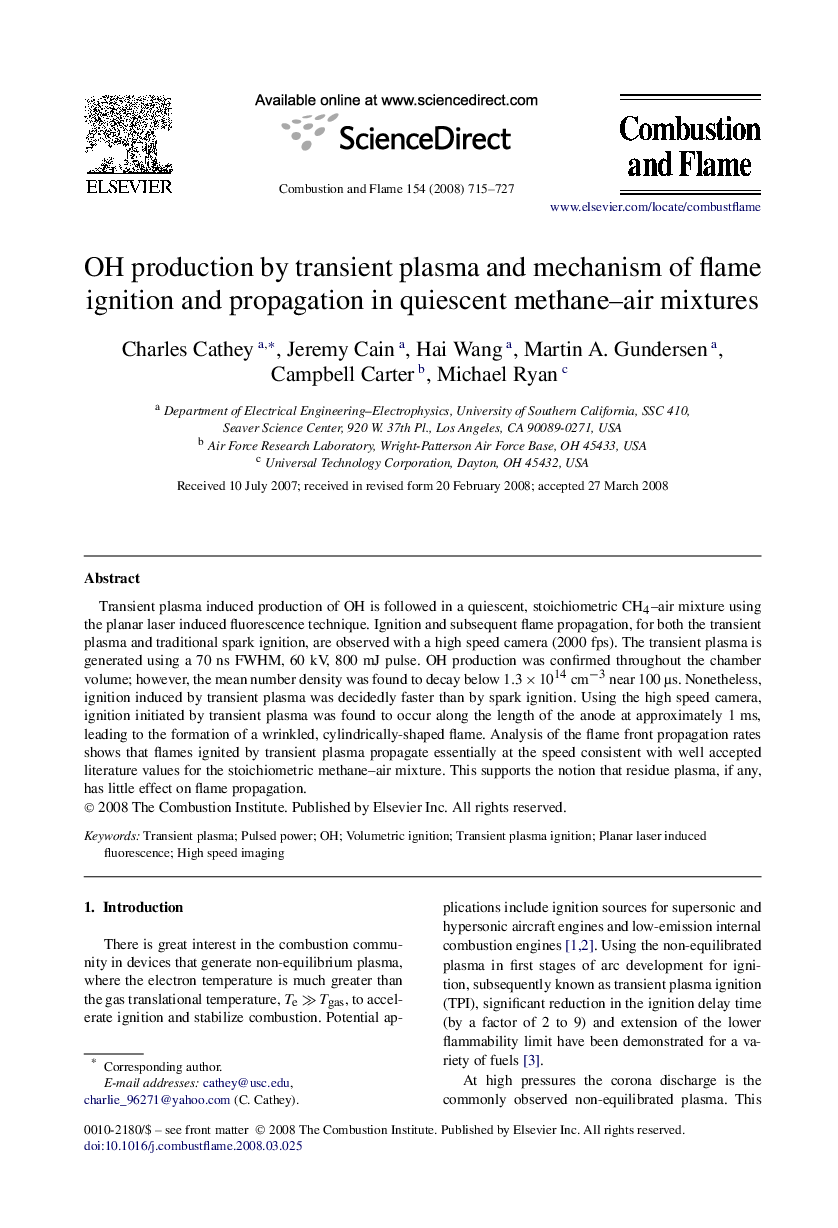| Article ID | Journal | Published Year | Pages | File Type |
|---|---|---|---|---|
| 167719 | Combustion and Flame | 2008 | 13 Pages |
Transient plasma induced production of OH is followed in a quiescent, stoichiometric CH4–air mixture using the planar laser induced fluorescence technique. Ignition and subsequent flame propagation, for both the transient plasma and traditional spark ignition, are observed with a high speed camera (2000 fps). The transient plasma is generated using a 70 ns FWHM, 60 kV, 800 mJ pulse. OH production was confirmed throughout the chamber volume; however, the mean number density was found to decay below 1.3×1014 cm−31.3×1014 cm−3 near 100 μs. Nonetheless, ignition induced by transient plasma was decidedly faster than by spark ignition. Using the high speed camera, ignition initiated by transient plasma was found to occur along the length of the anode at approximately 1 ms, leading to the formation of a wrinkled, cylindrically-shaped flame. Analysis of the flame front propagation rates shows that flames ignited by transient plasma propagate essentially at the speed consistent with well accepted literature values for the stoichiometric methane–air mixture. This supports the notion that residue plasma, if any, has little effect on flame propagation.
